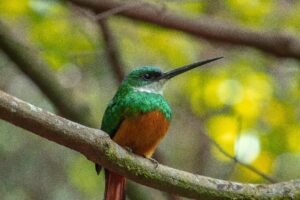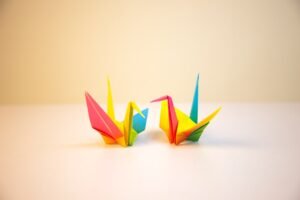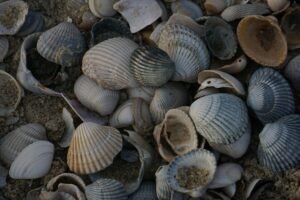Comprehensive Guide of Foraging
Overview
Foraging is the practice of searching for and gathering wild food resources from nature. This hobby allows individuals to connect with the environment, learn about local ecosystems, and discover edible plants, mushrooms, fruits, and nuts. Foraging can be a rewarding and sustainable way to source food, as it encourages people to appreciate the natural world and its offerings. Enthusiasts often enjoy the thrill of the hunt, the knowledge gained about various species, and the culinary creativity involved in preparing foraged ingredients. Foraging can also promote a healthier lifestyle by incorporating fresh, organic, and seasonal foods into one’s diet.
History
The history of foraging dates back to prehistoric times when early humans relied on wild plants and animals for sustenance. Before the advent of agriculture, foraging was the primary means of obtaining food. As societies evolved, the practice of foraging continued, with various cultures developing extensive knowledge of local flora and fauna. Indigenous peoples around the world have long practiced foraging, passing down traditional knowledge of edible plants and their uses. In recent years, there has been a resurgence of interest in foraging, driven by a growing awareness of sustainability, local food movements, and a desire to reconnect with nature.
Popularity and Demographics
Foraging has gained popularity in recent years, particularly among urban dwellers seeking to reconnect with nature and explore sustainable food sources. This hobby appeals to a diverse demographic, including food enthusiasts, environmentalists, and those interested in self-sufficiency. Workshops, guided foraging tours, and online communities have emerged, making it easier for beginners to learn about foraging safely and responsibly. Social media platforms have also played a significant role in popularizing foraging, with many users sharing their finds, recipes, and experiences. As awareness of the benefits of foraging continues to grow, it is likely to attract even more individuals looking to embrace this enriching hobby.
Sponsored Hobbyists and Vendors
Become a Sponsor!
Affiliate Disclaimer: Throughout some sections below, Hobby Spotlight may suggest some tools, equipment or material using affiliate links. By purchasing any of those items, Hobby Spotlight may earn a small commission. This helps fund our website, content and services without directly charging our users.
Getting Started
Foraging Essentials:
Beginner
- Foraging Guide Book: A comprehensive guide to identifying edible plants and mushrooms.
- Field Notebook: A notebook for recording observations and notes during foraging trips.
- Basket for Foraging: A lightweight basket for collecting foraged items.
- Hand Trowel: A small hand tool for digging up roots and plants.
- Plant Identification App: A mobile app to help identify plants using photos.
Intermediate
- Foraging Knife: A specialized knife for safely harvesting plants and mushrooms.
- Wild Edibles Cookbook: A cookbook featuring recipes using foraged ingredients.
- Mushroom Identification Guide: A detailed guide specifically for identifying edible mushrooms.
- Foraging Backpack: A durable backpack designed for carrying foraging supplies and collected items.
- Water Bottle with Filter: A portable water bottle with a built-in filter for safe drinking water while foraging.
Basic Requirements and Initial Setup:
- Knowledge of Local Flora: Understanding which plants are edible and safe to consume is crucial. Familiarize yourself with local species, including their appearance, habitat, and seasonality.
- Foraging Tools: Essential tools include a basket or bag for collecting, a knife for cutting, and a field guide for identification. A small trowel can also be useful for digging up roots or tubers.
- Safety Precautions: Always ensure you are foraging in safe areas, away from pollution and pesticides. Carry a first aid kit and be aware of any potential allergens in the environment.
Fundamental Skills to Learn:
- Plant Identification: Mastering the ability to accurately identify edible plants and distinguish them from toxic look-alikes is essential.
- Seasonal Awareness: Understanding the seasons and when specific plants are at their peak for foraging helps maximize your harvest.
- Harvesting Techniques: Learning the proper methods for harvesting plants ensures sustainability and promotes regrowth.
- Preservation Methods: Knowing how to preserve foraged items through drying, pickling, or freezing extends their usability.
- Cooking and Preparation: Familiarizing yourself with various cooking methods and recipes that incorporate foraged ingredients enhances your culinary skills.
Sub-Hobby/Common Activities:
- Mushroom Foraging: Searching for wild mushrooms, which requires specific knowledge to avoid toxic varieties.
- Herb Foraging: Collecting wild herbs for culinary or medicinal uses, such as wild garlic or dandelion greens.
- Berry Picking: Identifying and harvesting wild berries like blackberries, blueberries, and raspberries during their respective seasons.
- Root Digging: Foraging for edible roots such as wild carrots or burdock, which often requires digging tools.
- Wildflower Harvesting: Collecting edible flowers for salads or garnishes, enhancing both flavor and presentation.
Terminology:
- Foraging: The act of searching for and gathering wild food resources.
- Edible: Referring to plants or fungi that are safe and suitable for human consumption.
- Toxic Look-Alikes: Plants that resemble edible species but are harmful or poisonous if consumed.
- Field Guide: A reference book or resource that helps identify plants, animals, or fungi in the wild.
- Harvesting: The process of collecting mature plants or fungi for consumption.
- Seasonality: The time of year when specific plants are available and at their best for foraging.
- Wildcrafting: The practice of harvesting plants from their natural habitat for food, medicine, or craft.
- Permaculture: A sustainable approach to land management that incorporates foraging as part of a holistic ecosystem.
- Ethnobotany: The study of how people use plants in their cultures, including for food and medicine.
- Bioregion: A specific geographic area defined by its natural characteristics, influencing the types of plants available for foraging.
Advanced Topics and Specializations
Advanced Foraging Tools:
- Foraging Field Guide: Comprehensive guidebook with detailed information on identifying edible plants, mushrooms, and wild herbs.
- Wild Edible Plant Identification Kit: A set of tools including a magnifying glass and plant press for detailed examination and preservation of foraged specimens.
- Foraging Backpack: Durable and spacious backpack designed specifically for foragers, featuring compartments for tools and collected items.
- Foraging Knife with Sheath: High-quality, sharp knife designed for foraging, with a protective sheath for safe storage.
Advanced Projects and Achievements:
- Wild Mushroom Identification: Successfully identifying and foraging edible mushrooms, such as chanterelles and morels, while avoiding toxic varieties.
- Herbal Remedies Creation: Crafting tinctures, salves, and teas from foraged herbs, utilizing traditional knowledge and modern techniques.
- Seasonal Foraging Guides: Developing comprehensive guides that detail the best foraging practices for different seasons, including edible plants and their uses.
Advanced Techniques and Methods:
- Ethical Foraging Practices: Learning to forage sustainably by understanding local ecosystems and ensuring minimal impact on plant populations.
- Preservation Techniques: Mastering methods such as drying, pickling, and fermenting foraged foods to extend their shelf life and enhance flavors.
- Wild Food Cooking Techniques: Experimenting with various cooking methods to highlight the unique flavors of foraged ingredients, including grilling, sautéing, and infusing.
Specializations and Niche Areas:
- Edible Wild Plants: Focusing on foraging and utilizing a variety of wild greens, roots, and flowers for culinary purposes.
- Mushroom Foraging: Specializing in the identification and collection of wild mushrooms, including both edible and medicinal varieties.
- Foraging for Medicinal Herbs: Exploring the use of wild plants for natural remedies and health benefits.
- Coastal Foraging: Gathering seaweeds, shellfish, and other marine edibles along shorelines.
- Urban Foraging: Discovering edible plants in urban environments, including parks and gardens, and promoting local biodiversity.
Future Trends and Innovations:
- Growing interest in foraging workshops and community events that promote local food systems.
- Increased awareness of the health benefits of foraged foods, leading to a rise in their popularity in restaurants and home cooking.
- Integration of technology, such as foraging apps that help identify plants and track foraging locations.
- Focus on regenerative foraging practices that support biodiversity and ecosystem health.
- Collaboration with chefs and food artisans to create unique dishes featuring foraged ingredients.
Technology Integration:
- Foraging Apps: Mobile applications that assist users in identifying edible plants and mushrooms through image recognition and databases.
- Online Foraging Communities: Social media platforms and forums where foragers share tips, experiences, and recipes.
- GPS Technology: Utilizing GPS devices to mark foraging locations and track seasonal changes in plant availability.
- Virtual Reality Experiences: Immersive VR programs that educate users about foraging techniques and local ecosystems.
- Drone Technology: Exploring the use of drones for mapping and monitoring foraging areas, particularly in remote locations.
Further Learning and Resources
Books:
- The Forager’s Harvest by Samuel Thayer: An excellent introduction to foraging, this book offers detailed descriptions and photographs of edible wild plants, making it accessible for beginners.
- Edible Wild Plants: Wild Foods from Dirt to Plate by John Kallas: This comprehensive guide provides information on identifying, harvesting, and preparing over 30 edible wild plants, ideal for those new to foraging.
- Foraging for Wild Foods: A Guide to Foraging for Beginners by John Lewis: A practical guide that covers the basics of foraging, including safety tips and simple recipes to help beginners get started.
- Wild Food: A Practical Guide to Foraging by Roger Phillips: This advanced book dives deeper into the world of foraging, offering extensive knowledge on identifying and utilizing a wide range of wild foods.
- The Encyclopedia of Edible Plants of North America by François Couplan: A detailed reference book that covers a vast array of edible plants, their uses, and preparation methods, suitable for experienced foragers.
- Foraging & Feasting: A Field Guide and Wild Food Cookbook by Dina Falconi: Combining foraging with culinary arts, this book provides in-depth information on wild edibles along with recipes, making it perfect for advanced foragers.
Websites:
- Foraging Texas, https://www.foragingtexas.com – A comprehensive guide to edible plants in Texas, including identification tips and recipes.
- Wild Food Adventures, https://www.wildfoodadventures.com – Offers foraging tours and workshops, focusing on sustainable practices and local flora.
- Eat The Weeds, https://www.eattheweeds.com – A resource for identifying edible wild plants, with articles and videos on foraging techniques.
- Forager Chef, https://www.foragerchef.com – Features recipes and cooking tips using foraged ingredients, along with plant identification guides.
- Wild Edibles, https://www.wildedibles.com – A site dedicated to the identification and culinary use of wild edible plants, with a focus on safety and sustainability.
Courses:
- Foraging for Beginners, https://www.udemy.com/course/foraging-for-beginners – An introductory course covering the basics of foraging, including plant identification and safety tips.
- Wild Food Foraging Course, https://www.wildfoodadventures.com/courses – A hands-on course that teaches participants how to identify and gather wild edibles in their local area.
- Advanced Foraging Techniques, https://www.skillshare.com/classes/advanced-foraging-techniques/123456 – A course designed for experienced foragers looking to deepen their knowledge of wild plants and their uses.
- Foraging and Cooking with Wild Plants, https://www.masterclass.com/classes/foraging-and-cooking-with-wild-plants – Learn from experts how to forage and prepare delicious meals using wild ingredients.
- Herbal Foraging and Medicine Making, https://www.theherbalacademy.com/courses/herbal-foraging – A course that combines foraging with herbal medicine, teaching participants how to identify and use medicinal plants.
Content Creators and Community
Content Creators:
- Wild Food Girl (YouTube): Focuses on foraging wild edibles and cooking with them, sharing tips on identifying and preparing various plants.
- Josh Williams (Instagram): A foraging expert who shares stunning visuals and educational content about wild food foraging and sustainable practices.
- Foraging Texas (YouTube): Offers in-depth guides on identifying edible plants in Texas, along with recipes and foraging tips.
Online Forums and Social Media Groups:
- Reddit – /r/foraging: A community for sharing experiences, tips, and advice on foraging various wild edibles.
- Facebook Foraging Groups: Numerous groups where enthusiasts share their finds, recipes, and foraging locations.
- Foraging Community on Discord: An interactive platform for live discussions, sharing foraging tips, and connecting with fellow foragers.
- Instagram Hashtags (#foraging, #wildfood): Follow trending foraging posts, tips, and inspiring visuals from the foraging community.
- Pinterest Boards: Discover a wealth of foraging guides, recipes, and tips curated by passionate foragers.
Local Clubs and Organizations:
- Foraging Workshops: Many local organizations offer workshops where participants can learn about foraging techniques and safety.
- Botanical Gardens: Often host foraging events and classes focused on local edible plants.
- Nature Conservation Groups: Collaborate on foraging events that promote sustainable practices and education.
- Local Foraging Clubs: Groups that organize foraging outings and share knowledge about local flora.
- Meetup Groups: Platforms like Meetup.com host local foraging clubs and nature walks focused on edible plants.
Events, Meetups, and Conventions:
- Wild Food Festival: An event celebrating foraging with workshops, tastings, and expert talks on wild edibles.
- Local Foraging Walks: Guided walks in parks and nature reserves to learn about local edible plants.
- Food and Foraging Festivals: Many festivals feature foraging demos, tastings, and educational sessions.
- Workshops at Nature Centers: Learn from experts about foraging and cooking with wild foods.
- Foraging Conferences: Events that bring together foraging enthusiasts for networking, workshops, and discussions.
Associated Hobbies
- Cooking: Foraging often leads to a deeper appreciation for cooking with fresh, wild ingredients. Many foragers enjoy experimenting with new recipes that highlight the unique flavors of foraged foods.
- Gardening: Foraging can complement gardening, as individuals may cultivate specific plants that they enjoy foraging. This can lead to a greater understanding of plant growth and seasonal cycles.
- Wildlife Observation: Foragers often develop an interest in observing wildlife, as they spend time in natural habitats. This can enhance their understanding of ecosystems and the relationships between plants and animals.
- Herbalism: Many foragers explore the medicinal properties of wild plants, leading to an interest in herbalism. This can involve learning about the uses of various herbs for health and wellness.
- Photography: Capturing the beauty of nature and the foraged items can become a hobby in itself. Many foragers enjoy taking photographs of plants, mushrooms, and the landscapes they explore.
- Nature Hiking: Foraging often involves hiking in natural areas, which can lead to a love for exploring trails and discovering new environments. This physical activity promotes health and well-being.
- Food Preservation: Foragers frequently learn techniques for preserving their finds, such as drying, pickling, or fermenting. This can become a rewarding hobby that allows them to enjoy foraged foods year-round.
- Community Involvement: Many foragers join local groups or clubs to share knowledge, experiences, and foraging locations. This fosters a sense of community and encourages sustainable foraging practices.
Cost and Budgeting
Initial Investment and Ongoing Costs:
- Initial Investment: The cost to start foraging can be minimal, as it primarily requires a good field guide and possibly a basket or bag for collecting. A basic field guide can range from $10 to $30, while a sturdy basket may cost around $15 to $50. If you choose to invest in additional tools like a knife or a foraging app, costs can increase to $100 or more.
- Ongoing Costs: Ongoing costs are generally low, as foraging relies on natural resources. However, you may want to invest in additional guides or apps for specific regions or types of plants, which can range from $10 to $50. If you participate in workshops or classes to enhance your skills, these can cost anywhere from $20 to $200 depending on the program.
Budget-Friendly Options:
- Library Resources: Many libraries offer free access to foraging books and guides, allowing you to learn without any initial investment.
- Community Workshops: Look for local community centers or nature organizations that offer free or low-cost foraging workshops, which can provide valuable hands-on experience.
- Online Resources: Numerous websites and YouTube channels provide free information and tutorials on foraging, making it easy to learn without spending money.
Where to Buy:
- Bookstores: Local or online bookstores often carry a variety of foraging guides, from beginner to advanced levels.
- Outdoor and Gardening Stores: These stores may offer tools and supplies for foraging, such as baskets, knives, and field guides.
- Online Retailers: Websites like Amazon and specialized foraging sites provide a wide selection of books and tools, often with user reviews to help you choose the best options.
Money Making
How to Turn the Hobby into a Profession or Side Hustle:
- Foraging Tours: Start a business offering guided foraging tours in local parks, forests, or nature reserves. Share your knowledge of edible plants, mushrooms, and wild herbs with participants, teaching them how to identify and safely harvest these natural resources. This can be a fun and educational experience for nature enthusiasts and foodies alike.
- Foraging Workshops: Organize workshops where you teach individuals or groups about foraging techniques, safety, and preparation of foraged foods. These can be held in person or online, allowing you to reach a wider audience. You can also create specialized workshops focusing on specific types of foraging, such as mushroom hunting or wild herb identification.
- Foraged Food Products: Create and sell products made from foraged ingredients, such as jams, jellies, pickles, or herbal teas. This can involve sourcing wild ingredients and crafting unique recipes that highlight the flavors of foraged foods. You can sell these products at local farmers’ markets, online, or through specialty food stores.
- Foraging Blog or YouTube Channel: Share your foraging adventures and knowledge through a blog or YouTube channel. Create content that includes foraging tips, recipes, and safety guidelines. As your audience grows, you can monetize your platform through sponsorships, affiliate marketing, and ad revenue, turning your passion into a profitable venture.
- Foraging Books or E-books: If you have extensive knowledge about foraging, consider writing a book or e-book that serves as a guide for beginners. Include information on identifying edible plants, seasonal foraging tips, and recipes. Self-publishing platforms make it easier than ever to share your expertise and reach a wider audience.
Benefits and Enjoyment
Physical, Mental, and Social Benefits:
- Physical Activity: Foraging often involves walking, hiking, and bending, which can improve cardiovascular health, flexibility, and overall physical fitness. The varied terrain and conditions can also enhance balance and coordination.
- Mental Stimulation: Engaging in foraging requires knowledge of plant identification, seasonal changes, and ecological systems. This mental engagement can improve cognitive function, enhance memory, and foster a deeper connection with nature.
- Social Interaction: Foraging can be a communal activity, allowing individuals to bond over shared experiences. Joining foraging groups or workshops can lead to friendships and a sense of community, as participants share tips, recipes, and stories.
Success Stories and Inspirational Examples:
- Wildman Steve Brill: Known as the ‘Wildman,’ Steve Brill is a foraging expert who has educated thousands about wild edibles. His guided foraging tours in New York City have inspired many to connect with nature and learn about sustainable food sources.
- Langdon Cook: An author and foraging enthusiast, Langdon Cook has written extensively about wild foods and their culinary uses. His books and workshops have inspired many to explore foraging as a way to enhance their cooking and appreciation for nature.
- Robin Wall Kimmerer: A botanist and author, Kimmerer combines her scientific knowledge with indigenous wisdom in her work on foraging and plant ecology. Her teachings emphasize the importance of respecting nature and understanding the cultural significance of foraged foods.
Ways to Enjoy and Grow in the Hobby:
- Take a Foraging Class: Enroll in local foraging workshops or classes to learn from experienced foragers. These classes can provide valuable knowledge about safe and sustainable foraging practices.
- Start a Foraging Journal: Document your foraging experiences, including locations, plants found, and recipes tried. This practice can enhance your learning and help you track your progress over time.
- Experiment with Recipes: Use your foraged ingredients in cooking to discover new flavors and dishes. Sharing your culinary creations with friends and family can also enhance your social connections through food.
Challenges and Solutions
Common Challenges Faced by Hobbyists:
- Identifying Edible Plants: One of the biggest challenges for foragers is accurately identifying which plants are safe to eat. Many edible plants have toxic look-alikes, making it crucial to have a solid understanding of botany.
- Seasonal Availability: Different plants and mushrooms are available at different times of the year. Foragers may struggle to find their desired items if they are not aware of the seasonal patterns of local flora.
- Legal Restrictions: Some areas have regulations regarding foraging, including protected species and designated foraging zones. Navigating these laws can be challenging for beginners.
Tips for Overcoming These Challenges:
- Educate Yourself: Invest time in learning about local plants through field guides, online resources, or foraging classes. Joining local foraging groups can also provide valuable knowledge and support.
- Keep a Foraging Journal: Document your foraging experiences, including locations, seasons, and plant characteristics. This will help you track what you find and improve your identification skills over time.
- Research Local Laws: Before foraging, familiarize yourself with local regulations regarding foraging. This can help you avoid legal issues and ensure sustainable practices.
Safety Considerations and Best Practices:
- Always carry a reliable field guide or app to assist with plant identification and ensure you are not consuming anything toxic.
- Forage in areas that are free from pesticides and pollutants, such as organic farms or designated wild areas.
- Start with small quantities of new plants to test for any allergic reactions or sensitivities before consuming larger amounts.
- Be aware of your surroundings and potential hazards, such as wildlife or unstable terrain, while foraging.
- Practice sustainable foraging by only taking what you need and leaving enough for wildlife and future growth.
Conclusion and Encouragement
Recap of Key Points:
- Foraging is the practice of searching for and gathering wild food resources, which can include plants, mushrooms, and even edible insects.
- This hobby connects you with nature, allowing you to learn about local ecosystems and the various edible species that thrive in your area.
- Foraging can be a sustainable way to source food, reducing reliance on store-bought products and promoting a more eco-friendly lifestyle.
- It encourages mindfulness and patience, as foragers must carefully observe their surroundings and identify safe, edible options.
- With proper knowledge and practice, foraging can lead to delicious meals and unique culinary experiences, enhancing your cooking skills and creativity.
Encouragement to Start and Enjoy the Hobby:
- Foraging is an accessible hobby that can be enjoyed by people of all ages. Start with simple plants and gradually expand your knowledge as you gain confidence.
- It offers a unique opportunity to explore local parks, forests, and even urban areas, turning everyday walks into exciting treasure hunts for edible plants.
- Joining a foraging group or taking a workshop can enhance your experience, providing valuable insights from experienced foragers and fostering a sense of community.
Final Tips and Motivational Thoughts:
- Always ensure you can accurately identify any plant or mushroom before consuming it. Misidentification can lead to serious health risks, so invest time in learning and using reliable resources.
- Practice ethical foraging by only taking what you need and leaving enough for wildlife and future foragers. Respect the environment and the ecosystems you explore.
- Document your foraging adventures through journaling or photography. This not only helps you track your findings but also allows you to share your experiences with others, inspiring them to join the hobby.

















